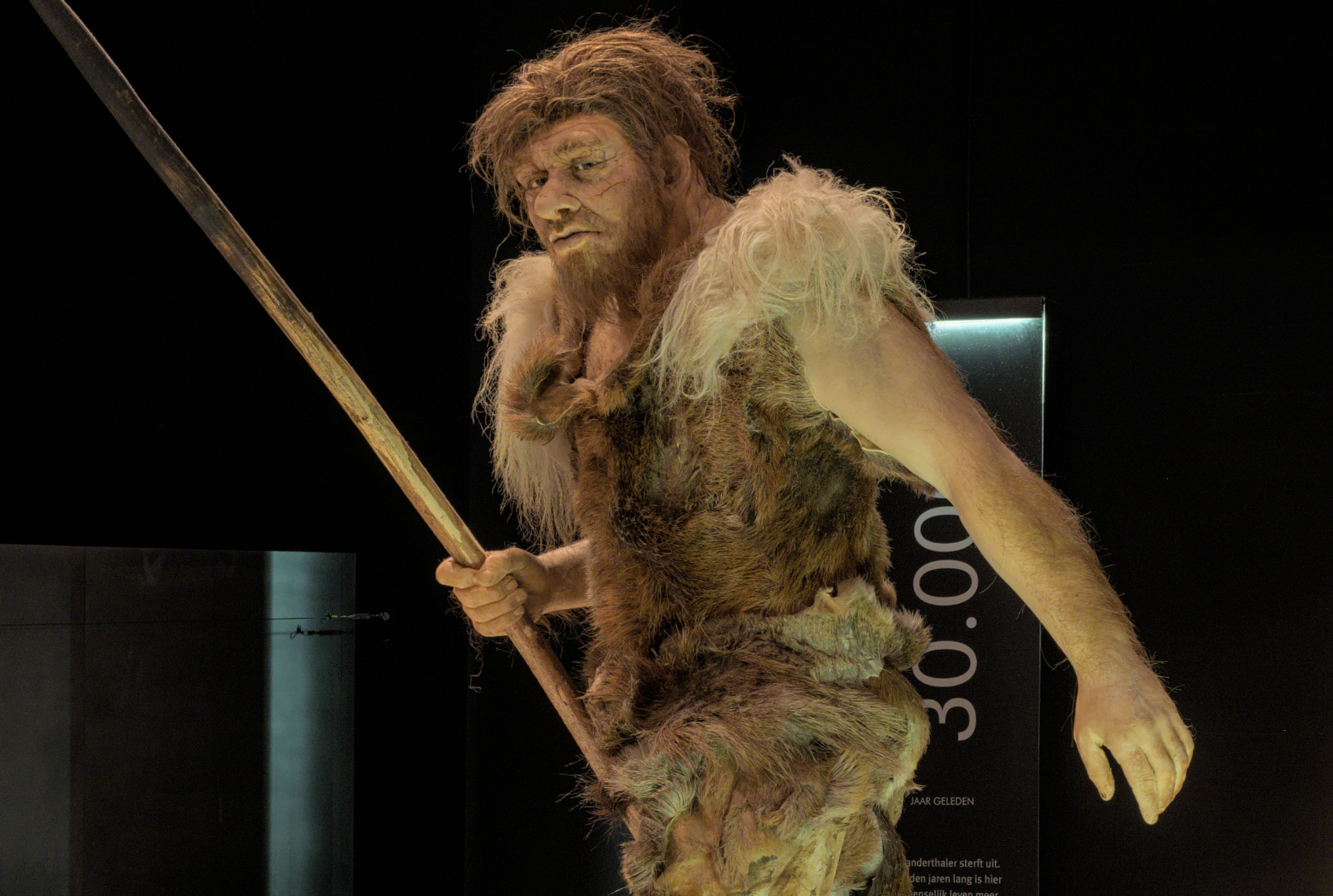I was around ten when I had a recurrent dream. Back then, I was good at lucid dreaming — I could make myself dream the same story for weeks on end and remember all of it. It was similar to writing in that it was like watching a story unfold in my imagination. I dreamt many stories this way; although most are lost, there was one that stuck with me about a Neanderthal buried in the permafrost next to the mini merry-go-round in our apartment building’s back yard.
We lived in Saint Petersburg, Russia. It was cold and snowy in the winter even if there was no actual permafrost in the courtyard. I must have read something about the marvelous preservation of mammoths, and that gave me the idea. I figured that if those ancient pachyderms could be found in permafrost, so too could early humans.
In my dream, I dig under the snow, in the bushes located a few feet from the merry-go-round, and discover a bit of old animal skin. Brushing away a few more layers of snow and dirt, I find what looks like a mummified arm, dressed in clothing made of fur. I know right away that I’ve discovered a Neanderthal! It’s my most amazing secret and my best discovery to date. I carefully cover up my find with snow and rush home for supper. It’s dark after two in the afternoon in the winter, so I am not worried about anyone else stumbling on my ancient human under the snow. It’s too cold and dark to dig around in there.
I come back day after day, after school, to uncover different bits of the body. About a week into this, I find his face and decide it is a fully-grown male Neanderthal. What consumes me most is that the body seems very well preserved, and so I must find a way to reanimate him! I am going to resurrect a secret, ancient friend, Frankenstein style.

Caption: Neanderthal hunters depicted in the Gallo-Romeins Museum Tongeren (Belgium). Photo by Benoit Brummer
Since my Neanderthal’s skin looks well preserved — his head even has full, long and shaggy hair — I figure his organs must be in fine shape, too. But his blood is a liquid and liquids freeze in the cold. So that is a problem. I know from ice cube trays that frozen water takes up more space than liquid water. Ergo, his blood, which I decide must have similar properties to water, would have expanded when frozen and ruptured all of his blood vessels. I can’t just do a blood transfusion — I planned to donate some of mine — I also have to build a whole new circulatory system. It took days of dreaming to figure out the best material for this endeavor. The veins not only have to be the right size, but also easily available to me. My solution was plastic drinking straws!
It was a brilliant idea — they were easily available and I knew how to put them together by sticking one end into another to make long chains of tubes. I decided to replace all of the mummified blood vessels with straws. In my recurrent dreams, I drew endless diagrams and traced my own blood vessels — those that are easily visible from outside — to get ideas on how to construct a circulatory system. I calculated how many straws I would need to get the blood flowing in my Neanderthal. Easy!
Of course, I was also planning to hide a fully grown man from my parents, and everyone else I knew, once he came back to life. Perhaps we could build him a shelter in the snow somewhere under the bushes or we might hide him in a closet. If he was in my closet, it would be easier to talk with him and question him about life in prehistoric times. I guess I assumed he’d speak Russian, although I don’t recall it ever coming up. We’d have plenty to talk about. He’d be awed by all of the modern amenities and food — there were no potatoes or chickens way back then. I even planned to teach him how to read so he wouldn’t be bored while I was at school. I was a very busy girl.
Remembering how I thought as a child brings me back to current questions — how do we comprehend the minds of others? I have a granddaughter who is eighteen months old. She is just starting to talk; she probably knows about one hundred words. We are on the cusp of communicating ideas to each other that both of us will understand. Before, when she was an infant, comprehending her thoughts seemed nearly impossible, like understanding the thoughts of a bee. She was a little alien living with us, thinking alien thoughts, dreaming alien dreams. But things are about to change; soon she will be able to tell us what she is thinking about. Well, perhaps — there is always that Neanderthal buried in the back yard.
All of this is to say that understanding a mind of another — be it a child, an animal, an alien, or an AI — is not a trivial undertaking. Sci-fi authors are fortunate to have a virtually unlimited cognitive landscape to explore in their stories.
Update:
I’ve finished, but have yet to publish, my novel tentatively titled “Orphans and Demons.” I have yet to finish my other novel “Tinkerer’s Daughter.” And I have started multiple short stories and novellas. I have no shortage of ideas or topics to write about, but it helps to have a goal. So I’ve also started working on a story about a Dyson Sphere to submit to a competition dedicated to that topic. We shall see what Neanderthal I uncover from my subconscious.
Happy reading!
